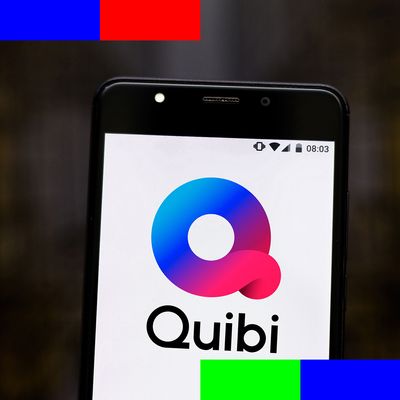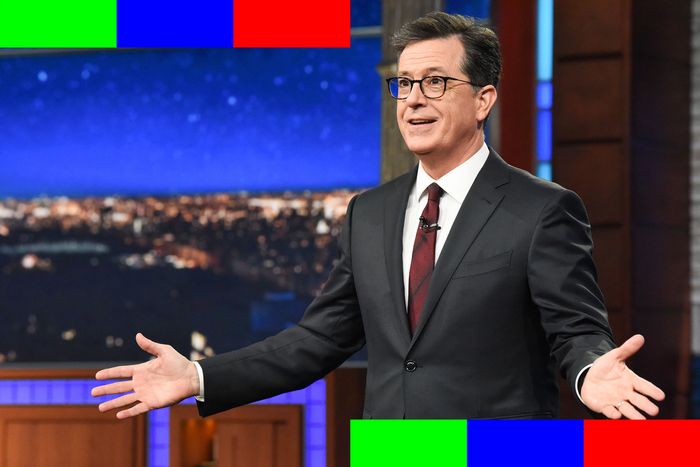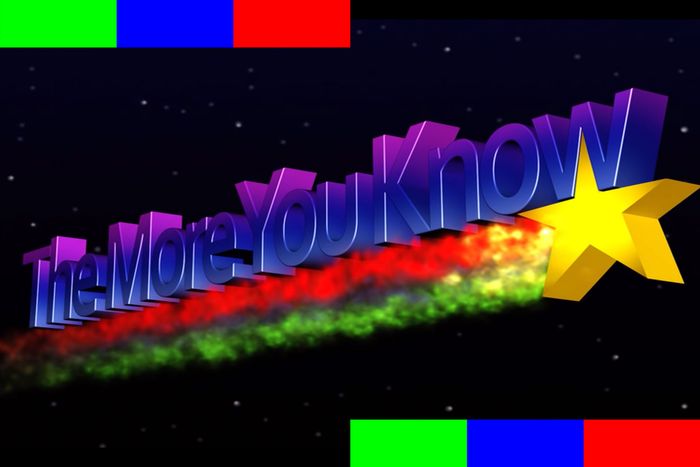
I started this week determined to make this week’s Buffering about something other than the coronavirus, telling my editor that readers still wanted news and analysis of what was going on in the streaming business. He agreed, but told me I should still be on the lookout for virus-related stories. By Tuesday, it became clear the spreading pandemic would be the lead of this newsletter. On Wednesday, with Tom Hanks and Rita Wilson testing positive for the virus and the NBA shutting down, it was obvious no other story was worth exploring this week. So yeah, this week’s edition has a single theme: How fallout from the virus is rapidly reshaping the TV and streaming landscape, from scheduling snafus to production delays to general industry-wide uncertainty. I also offer a proposal for how the entertainment business can help in the battle against the virus. Hopefully next week’s newsletter will get back to regular programming, but for now: Stay at home if you feel even a little bit sick and please, once again, wash your hands (and don’t forget to moisturize).
Launching a New Service During a Pandemic
The next four months are supposed to see rollouts of three new streaming platforms — Quibi, Peacock, and HBO Max — and so far, there’s no indication coronavirus concerns will delay the introduction of any of them. While Quibi has canceled a planned launch party, a rep for the streamer told me the April 6 launch of the product itself is very much not canceled. And insiders tell me NBCU is still moving forward with next month’s soft launch of Peacock to Xfinity cable and Internet customers, and that HBO Max is still on track for taking off in May. Given how much social distancing and quarantining will be going on in coming months, there’s a case to made that audiences will welcome the addition of new entertainment content. If you’re not spending money on restaurants and movie tickets, you might be willing to drop a few dollars to stream Friends again.
And yet: If things get really bad in the U.S. over the next few weeks, marketing these new platforms could become much more difficult, if only because the newbie streamers will be trying to get attention at a time when the country is preoccupied with fighting a pandemic. Quibi in particular needs its messaging to break through because it doesn’t have the power of a major corporation such as AT&T or Comcast behind it, nor does it have a library of classic TV shows and movies — a.k.a. video comfort food — to offer potential subscribers. Moreover, the U.S. (and world) economy seems headed for an economic downturn (at best) or a major recession (at worst). Disposable income could dry up if workers lose jobs and hours, while other consumers could start worrying about bad days ahead and decide to start proactively pinching pennies. This would potentially be bad for all subscription video services, but the new guys would be in the worst position.
In the short-term, it’ll also be interesting to see how Quibi’s format — entertainment and information delivered in morsel-size episodes under 10 minutes on your mobile phone — plays in a world where so many of its potential subscribers are stuck at home. Quibi execs have talked about the platform being geared toward filling those moments in the day when folks need a quick distraction delivered via phone: a subway or Uber ride, standing in line, waiting for friends to arrive for drinks. In the (hopefully brief) age of social distancing, people might not be doing those things as much, so it’s worth wondering whether Quibi will have the same utility it might in normal times.
But such thinking also likely underestimates the popularity of short-form entertainment, even if it’s consumed on your couch. Phones aren’t suddenly going to be going away during coronavirus quarantines (though don’t forget to clean them regularly for germs.) The under-35 crowd being targeted by Quibi is already watching YouTube, Snapchat videos, and TikToks at home; there’s no reason to think they will only want to watch Chrissy’s Court while on a subway. Plus, if overall video consumption soars in the coming months — and it probably will — this actually might not be such a bad time to launch a service with 50 new star-studded shows.
The TV World Adjusts
The global efforts to slow the spread of the new coronavirus are having an impact on just about everything right now, including the television business. Not since the immediate aftermath of 9/11 have so many networks, platforms, and productions had to change course so quickly. Within just the last few days, a slew of TV productions with in-person audiences, from talk shows to late night, first decided to tape in empty studios, and then, in many cases, simply shut down production and went on hiatus. CBS pushed back production of the fall season of Survivor, while the NBA has suspended its season. The National Association of Broadcasters, the TV industry’s biggest trade organization, canceled its annual convention, which had been set to take place next month in Las Vegas. And organizers also opted against moving forward with South by Southwest, which was scheduled to host premieres for a number of TV projects, including Freeform’s Fort Salem: Motherland and Hulu’s Solar Opposites.
These changes, dramatic as many of them are, are almost certainly just a hint of what may be ahead:
• Many series productions have come to a halt as studios and networks decided it’s too risky for production to continue. If universities and public schools are closing up, and millions of workers are being told to work from home, it was only a matter of time before Hollywood decided that delaying a show’s premiere by a few months is a small price to pay to protect the health of cast and crew. (The very real downside of these hiatuses: Such moves might cause economic hardship for crew members, many of who don’t have contractual guarantees of payment if a show is delayed.)
• With productions shutting down, networks and platforms may start making changes to how they roll out shows already in the can. Streaming shows tape months before they actually premiere, particularly on platforms such as Netflix and Amazon, which premiere with all episodes at once. So if a streamer or network knows that, say, five shows slated for the first quarter of 2021 won’t be available by then because of production delays now, it might make sense to start spreading out the premieres of completed shows so there’s not a big hole in their release calendar down the line.
• Broadcast networks won’t have to worry nearly as much in the short term: Most of their current scripted entertainment shows are close to wrapping production for the season or will do so shortly. But ongoing unscripted competitions such as American Idol and The Voice may have to ditch audiences, while those planned for the summer will face production roadblocks. And network development season could be disrupted: Broadcasters may have to shut down production of pilots for their fall shows, and some insiders are talking about the very real chance they’ll have to cancel or delay their annual May upfront presentations to advertisers (or make them digital presentations, as some cable networks have already done).
• Network shows may face preemptions in the coming weeks, as local affiliates with particularly bad outbreaks consider cutting into network programming for news coverage of how the pandemic is playing out in a given city. It’s also quite possible ABC, CBS, and NBC will start preempting regular primetime fare for news specials devoted to the crisis.
I prefaced all of the above by saying it’s what may be ahead. Perhaps by some miracle, the dramatic steps being taken by local and state governments, as well as by corporations, will manage to #FlattenTheCurve, slowing the spread of COVID-19 just enough to prevent worst-case scenarios from playing out and allowing things to begin to get back to normal in a few months. Sadly, things could also end up much, much worse. And whatever happens, the disruptions caused just by some of the preventative measures being taken now will result in economic hardship for many low- and mid-level workers in the TV business. (Big corporations are already taking a hit to their stock prices, but they’ll be fine.)
And in case it’s not obvious, let me be clear about this as well: The challenges facing the TV business pale next to those for other industries, both those related to Hollywood (movies, concerts) and those in the “real” world (like our health-care workers, who are about to be overwhelmed). It’s easy to make quips about being bored at home during quarantine or how TV ratings and streaming usage could soar in the weeks ahead. Jokes are a coping mechanism, so no judgement. But what’s happening now is incredibly serious, with ramifications likely to be felt for years to come.
Where Are the PSAs?
The wave of cancelations and delays underscores how Hollywood is largely doing a good job reducing risk to those who work in the business, putting people over profits (or at least minimizing future lawsuits). What we haven’t seen is any effort by Hollywood to use the pull of celebrity — and the power of TV and streaming platforms — to help slow the spread of COVID-19. That should change.
Sure, millions of us have seen social media messaging and news reports about the importance of hand washing and social distancing. But there are no doubt millions more who’ve missed these attempts at education or maybe haven’t been convinced it’s that big of a deal. (Hopefully, news that actors Tom Hanks and Rita Wilson, along with NBA star Rudy Gobert, have the virus will help change those minds.) But imagine if big, marquee stars from TV, movies, music and sports teamed up to make a supersized public service announcement detailing exactly what average Americans could do to stay healthy and reduce the risk of transmitting the disease.
• Have George Clooney and Lizzo team up to demonstrate the best way to clean your hands, perhaps with some musical assistance. Maybe there’s even a “We are the World”-style song and video with a slew of big name artists.
• John Mulaney could reassemble the Sack Lunch Bunch (with special guest Dr. Ken Jeong) to teach kids some hygiene basics.
• Howie Mandel and the Queer Eye guys could explain when it’s appropriate to wear a mask, and then how to glam up said mask.
• Bill Nye the Science Guy could break down in simple terms what it means to #FlattenTheCurve.
• And maybe Hanks and Wilson could tape a segment from Australia that helps viewers know how to spot the signs of COVID-19, the disease caused by the new coronavirus.
In past moments of crisis or natural disaster, the entertainment industry has played a key role helping bring economic relief to victims of tragedy. The post-9/11 concerts and telethons raised millions for those directly impacted by the terror attacks and helped with the overall healing process for the nation. Farm Aid, Comic Relief, and USA for Africa were incredibly effective late 20th century fundraisers fueled by starpower. Ditto the 1985 cover of “That’s What Friends are For” by Dionne Warwick, Elton John, Gladys Knight, and Stevie Wonder, which became the anthem of the push for more AIDS research and treatment options. But Hollywood shouldn’t wait until there are thousands of deaths or millions of economic casualties. It should be proactive, not reactive, coming together now to help in this battle.
How it get could done: The executives who oversee the big broadcast, cable, and streaming platforms have an important role to play in all this. Disney’s Bob Iger could pick up the phone today and get his peers at companies such as Netflix, Amazon, Apple, Comcast, Fox, and ViacomCBS to commit to airing some sort of mega-PSA. Imagine all of linear television airing such a special at the same time (much like the America: A Tribute to Heroes telethon after 9/11). And because so many younger audiences aren’t even watching regular TV anymore, what if streamers such as Netflix, Hulu, Amazon Prime Video, YouTube, Disney+, and Apple TV+ all committed to streaming the special for cord-cutters? Or even just released simple but entertaining hand-washing PSAs, pinning them at the top of their launch pages? These digital networks could put the power of their technology to work for the greater good by making sure the first thing subscribers saw on their home screen for a week was helpful, even necessary information.
One TV exec I respect a lot sounded a bit skeptical of this idea when I ran it by them, suggesting there’s nothing stopping individual networks from acting on their own to help educate audiences. Many already have through their news divisions — which is great! And as I noted at the start, social media is also an incredibly effective tool, perhaps far more potent than traditional TV with a portion of the populace. But this pandemic requires an all-hands approach: Every possible tool needs to be used to help prevent the worst case scenarios from playing out. Hollywood, particularly the TV business, should step up.
Parting Shot
“Not much more to it than a one-day-at-a-time approach, no?”
— Tom Hanks, announcing his COVID-19 status via social media on Wednesday.
We’re committed to keeping our readers informed.
We’ve removed our paywall from essential coronavirus news stories. Become a subscriber to support our journalists. Subscribe now.






